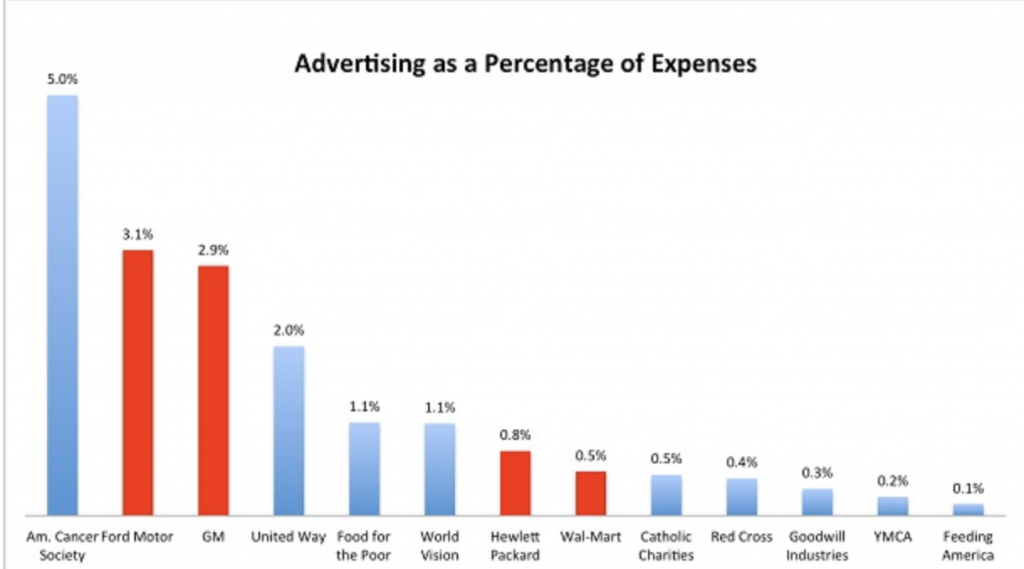Well-crafted video advertising campaigns for nonprofit organizations have several benefits. They enable a greater reach to wider audiences, tell the stories of the cause and the audience and help to put emotion behind the impact of giving (and more!).
Whether your budget is big or small, you can create a massive splash with your video campaign, especially as part of a seasonal or holiday marketing campaign. If creating an ad for your organization is something you want to do, or do more of, here are 5 steps you can take to create a successful nonprofit video advertisement.
In this article
- How to Create a Successful Nonprofit Ad
- Research Your Demographics
- Craft a Script for Your Ad
- Choose the Right Voice
- Have a Strong Call to Action
- Consider the Timing
- Does Advertising Have a Place in a Nonprofit Organization’s Budget?
- Nonprofit Advertising Takeaway Tips
How to Create a Successful Nonprofit Ad
Here are five key strategies for creating a successful nonprofit ad for your organization.
Research Your Demographics
You’re going to need to decide who your target audience is. Although for-profit and nonprofit companies differ in many ways, the one thing they have in common is that you need to choose who should be seeing your ads. You must always define your target audience. The best place to start is by looking at your current donor list. From this list, you can gauge what groups of people are most likely to donate to your cause. Are they mostly females? In a certain age range? Check out some steps on how to identify your target market.
Additionally, surveys are a great way to keep track of this information on your donors. Once they donate, direct them to complete a survey that asks their age, income, how they heard about your charity, etc. so you know who to market to (and how to market to them) in the future. Once you’ve gained information about your best donors, you will be able to market your ads to like-minded individuals who have not donated already. This may sound like a lot of work at first, but putting in the work means you can narrow your messages to a smaller target audience who is likely to donate. This will make your advertising dollars stretch a lot further. In attracting audiences, it’s all about quality over quantity.
Craft a Script for Your Ad
After you’ve narrowed down your target market, you’ll want to write a solid script. The script is the most important part of the video, as it’s the feature that is going to sell your message to potential donors. If your budget is small, you can have someone craft your script internally. Is there a writer or a spokesperson on your team? Or, if you have a larger organization, is there someone in marketing who could come up with copy? Use your resources to accomplish your goal on your budget, while still ensuring that the end message resonates with your audience.
As a nonprofit, you can make your social media marketing messages memorable by supporting them with compelling stories that work well for promoting charitable causes. For inspiration, see sample scripts for nonprofit advertising.
Choose the Right Voice
A well-written script is only able to come alive with the selection of the right voice to read the copy in a way that gives your message the right amount of impact.
Plus, when your nonprofit communicates with a tone of voice that is consistent, your donors will sense its trustworthiness and believe in the authenticity of your organization.
Here are three main ways that choosing the right brand voice can impact your brand.
- Voice is an expression of the faces behind the brand: Nonprofits are driven by people – whether that refers to the people who work for the nonprofit or the people the nonprofits are helping. The voice you use in your advertisement is the voice that is speaking to your audience and connects you to your audience.
- Voice can be used to influence: Nonprofits rely on donors and prospective donors, and most donors are persuaded by emotion and not numbers or logic. Therefore, how you say something can create a certain response within your viewers. Make sure your facts are supported by the right emotional approach.
- The voice you choose makes you unique: Many nonprofit organizations are targeting the same potential donors you are, so it’s important to set yourself apart. And the one thing that is unique to everyone, is their voice. Choose a voice that is uniquely representative of your brand values and will be memorable to your viewers. Think of questions like, ‘if my nonprofit organization was a person, what would they be like?’ to help guide you to the most suitable voice for your messaging.
Let’s take a look at a video campaign completed by Rooftop Agency on behalf of UNICEF, in which they thank Rotary International for their continued support.
The first thing you’ll notice about this advertisement is that the narrator’s voice is the voice of a child. Why is a child’s voice effective in this advertisement? It’s called emotive advertising. As the name implies, emotive advertising appeals to the emotions of the viewers and ‘tugs on their heartstrings’ in an attempt to get viewers to act upon the desired call to action (more on call to action below).
A child is associated with innocence and trustworthiness, so if your brand voice is that of a child, your brand will then be associated with these noble traits.
Have a Strong Call to Action
A strong call to action (CTA) is crucial in nonprofit advertising. The CTA is the message that you want your potential donors to act upon. You’ve hooked them with your messaging and now they are ready to donate, so what action should they take next?
Do you want them to go to your website to donate? If so, tell them so in your ads. Be clear on what action you want the viewers of your messaging to take so that they are not left wondering how to contribute. Make it easy for them to give you what you’re asking for. The easier it is to contribute, the more likely they are to be charitable. If you can’t draw a clean line from the video views to the action, then your video needs some more work.
Consider the Timing
The timing of the release of your ads is crucial. According to NP Tech, research shows that one-third of annual giving occurs during December.
So, when is the best time to begin planning/releasing ads to get the widest reach and interest? Early fall is the best time. According to the same research, 58% of nonprofit organizations begin releasing their ads in September/October.
Not only is time of year an important factor, but you should also think about the time of day you want your ads to run. Sleuthing out these types of small, but important details, can be done — based on the information you’ve already gathered about your ideal donor (in point number one above). The demographics of your current donor can help you to deduce the demographics of your potential donors. If you notice that most of your donors are retired, then targeting them during the day when they are likely to be at home, could be a great time to run your ads. Knowing your audience will dictate the time and placement of your ads.
Does Advertising Have a Place in a Nonprofit Organization’s Budget?
In short, yes. Nonprofits have to face the same competition for attention and awareness as all other brands and businesses, regardless of whether they are for-profit or not. While nonprofits may feel nervous that their ads could be scrutinized as a superfluous cost, this is not the case and we should move away from this thought process.
Dan Pallotta, an activist and fundraiser, discusses how frugality should not be equated with morality and how nonprofit organizations should be rewarded for their big goals and accomplishments, even if it equals more expenses in the long run. You can watch him in his TED Talk titled: The Way We Think About Charity is Dead Wrong.
Research shows that nonprofits are continuing to use some of their budget towards advertising to garner more charitable donations.
This chart from Nonprofit Quarterly lists some of the most well-known nonprofit (blue) and for-profit (red) organizations and illustrates what percentages of their budgets are dedicated towards their advertising efforts.

As the chart indicates, when it comes to advertising, some nonprofits are leading the way and they are either on par, or above, the advertising spending of their for-profit counterparts.
Nonprofit Advertising Takeaway Tips
Evidence, such as the research cited in this article, demonstrates that nonprofits are investing in advertising campaigns to bring in more money and more donations. Raising awareness for the cause and for how your organization contributes to improving the world is key to the success of your mission. Finding or creating room in your budget for video advertising that speaks to potential donors and helps you raise critical awareness, is always worth it.
Remember, you can still make waves, whether your budget is big or small. While creating an advertising campaign on a tight budget may seem daunting, following the above steps will make sure that your campaign garners maximum reach and attention. Just remember, one successful campaign means that your budget for advertising may increase in the future!
What nonprofit advertising campaigns have moved you? We’d love to hear from you in the comments below!

Leave a Reply